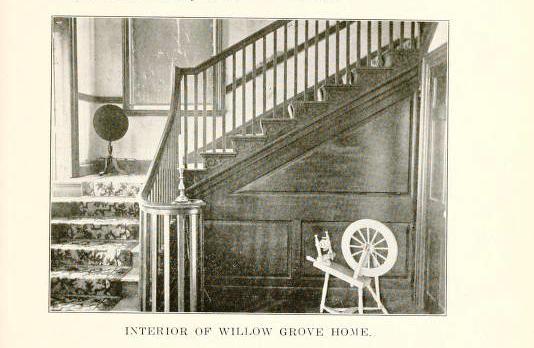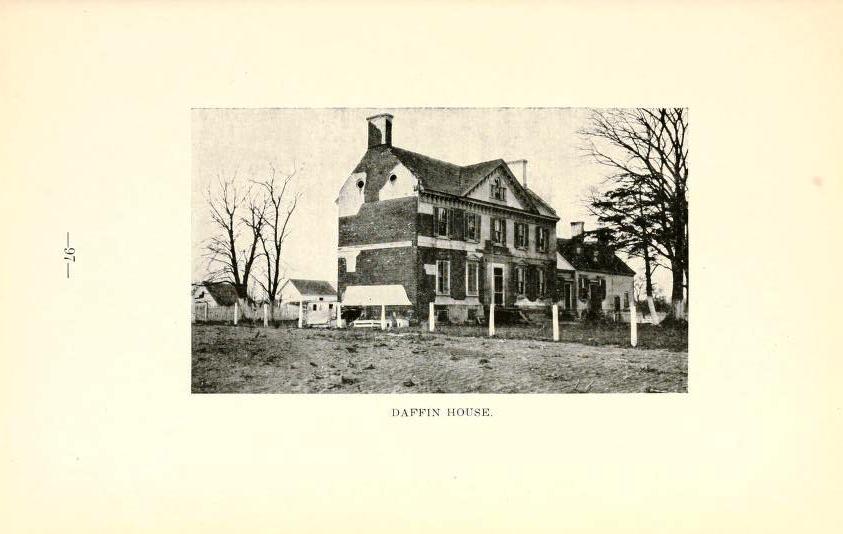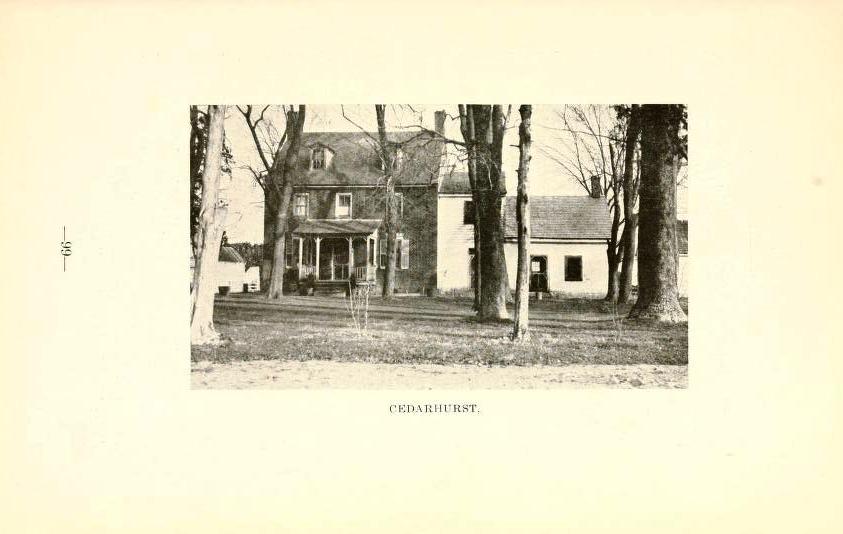The History of Caroline County, Maryland, From Its Beginning
Early Brick Dwellings in Caroline
One of the oldest brick dwellings in Caroline county is the Frazier Flats house, the home of Captain William Frazier, located several miles below Preston on a tract of land known as Frazier Neck. The house, built previous to the Revolution, antedates even the county in which it stands. It is a spacious building of red brick, bearing fine examples of workmanship in its colonial doorway, staircase and cornices. Until within the past generation much of the original furniture remained in the mansion, bearing the name of a cabinet maker of Drury Lane, London.
The Frazier house was one of eight similar houses built about the same period on the Eastern Shore. Poplar Grove, on the lower side of Skillington’s Creek, not far from Frazier Flats, was one of the eight. It, like nearly all of the others of the group, has been completely destroyed by fire.
Willow Grove, the former home of Matthew Driver, is perhaps better known as the Brick House Farm, long in the possession of the Horsey family at Greensboro. The house, which is one of the most pretentious of the early homes in the county, is still kept in splendid condition by both the owners and tenants. The interior is noted for its paneled stairway winding to the third floor, a masterpiece of workmanship. To visit this house as it stands today, more than a century after the death of its builder, gives one an insight into the character of the man whose name figures so prominently in the records of early Caroline. While no carved stone marks his resting place, the house at Willow Grove remains a monument to the memory of Matthew Driver.
Robert Hardcastle, who came to this county from England in 1748, settled in what was at that time Queen Anne's county. Later with the organization of Caroline, his lands were included within her borders. At the Hardcastle Landing (later Brick Mill), on the west side of the Choptank nearly opposite Melvill’s Landing he erected a brick mill and dwelling. The mill was torn down about 1900 but the house is still standing.

An unusual type of house of a much later date may be found on the road leading from Brick Mill Landing to Boonsboro. It is a brick house covered with brown cement, with a tower-like design in one end (Norman type). The house was built by a Mrs. Weatherby of Pennsylvania. It probably stands on or near the site of a former Hardcastle house, as in the rear of the dwelling is a burying ground with stones bearing the names of Edward and Mary Ann Hardcastle, both of whom died about 1840.
Francis Sellers, largely responsible for the establishment of Hillsboro Academy, was the original owner of the light sand-colored brick house still standing at Hillsboro. It was in this house that Jesse Lee, the famous Methodist itinerant, died while visiting the Sellers family.
The house at Plain Dealing, about a half mile below Denton on the state road, was built in 1789 for a county alms house. Later it was purchased by Mr. Dukes, who remodeled it for a private dwelling. It is one of the two old Caroline houses which has been continuously occupied by descendants of their early owners.
The second such house belonging to the Wright family is located between Federalsburg and Reliance. The land, granted to the Wrights by the English king for valuable services to his Majesty, lies in what is now Caroline, Dorchester and Sussex counties. The house having undergone changes by way of additions and repairs since its early days, is one of the best preserved of the old homes in the county.
The Captain Joseph Richardson house built in 1835 on the Denton hill was one of the finest older homes in the county. Its interior woodwork was of mahogany and walnut, while sills at its windows and door were of marble. Sometime during its existence it was used as a hotel, but in 1851 while occupied as a private dwelling, was totally wrecked by fire.

Oak Lawn, in the Oakland district, was built by Benjamin Silvester in 1783 and bears his initials with that date upon one of its gables. The main building resembles the Frazier Flats house, but Oak Lawn has a long wing extending to the rear, evidently built for kitchens and servants quarters. Some time after the death of its owner it became the possession of Mrs. Mary Bourne, his granddaughter, but has now passed out of the Silvester family.
Colonel William Whitely’s home near Whitelysburg was burned about 1840. A well-marked family burying ground may still be seen on the farm.
Colonel William Richardson’s home at Gilpin’s Point was burned many years ago. There seems to be a diversity of opinion as to whether or not it was a brick building. In 1840, a large frame house was built upon the same site by John Nichols but suffered a like fate as the Richardson house.
Previous to 1760, a small brick house was built at Potter's Landing. Forty years later, William Potter, a grandson of the first owner, added a three-story building to it. Double porches and a cupola which overlooked the Choptank were the distinguishing features of what from its completion has been known as the Potter Mansion.
Marblehead and Cedarhurst, two brick houses near Oak Lawn, in their early days belonged to John Boon, the great-grandfather of Charles G. Dukes of Plain Dealing.
